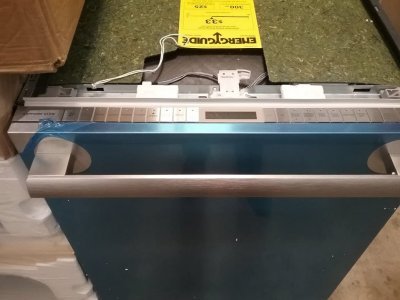In the hustle and bustle of our daily lives, modern appliances like dishwashers have become indispensable in saving time and effort. However, encountering the issue of a dishwasher not draining can quickly turn the convenience into frustration. In this article, we will delve into the common causes behind this predicament and provide practical solutions to get your dishwasher back to efficiently draining.
Table of Contents
Understanding the Importance of Proper Drainage
Before we delve into troubleshooting, let’s grasp the significance of a properly functioning dishwasher drainage system. The draining process ensures that dirty water and debris are effectively eliminated from the appliance, leaving your dishes sparkling clean and hygienic.
Common Causes of Drainage Problems
1. Clogged Filter or Drain Basket
The first line of defense against drainage issues is the filter or drain basket. Over time, food particles, grease, and other debris can accumulate, obstructing the flow of water. Regular cleaning and maintenance of these components can prevent clogs.
2. Blocked or Improperly Installed Drain Hose
A kinked, blocked, or improperly installed drain hose can hinder the water from flowing out of the dishwasher. Ensuring the hose is free from obstructions and correctly positioned can resolve this problem.
3. Air Gap Issues
An air gap prevents wastewater from flowing back into the dishwasher. If this component is blocked or not functioning correctly, it can lead to drainage problems. Cleaning or repairing the air gap might be necessary.

Troubleshooting and Solutions
1. Clean the Filter and Drain Basket
Regularly remove the filter and drain basket and rinse them under running water. Use a soft brush to dislodge stubborn debris. This simple step can significantly improve drainage efficiency.
2. Check the Drain Hose
Inspect the drain hose for kinks or blockages. If any are found, gently straighten the hose and clear the obstruction. Also, ensure that the hose is connected properly to the sink drain or disposal unit.
3. Clear the Air Gap
If your dishwasher has an air gap, remove the cover and clean any debris present. Test the water flow to ensure that it’s unobstructed.
4. Run a Vinegar Cycle
Sometimes, mineral deposits and grease buildup can hinder drainage. Running an empty cycle with white vinegar can help dissolve these deposits and improve water flow.
5. Seek Professional Help
If the issue persists despite your efforts, it might be best to consult a professional appliance repair technician. They can diagnose and fix more complex problems, ensuring a long-lasting solution.
Conclusion
A dishwasher not draining can indeed pose a frustrating dilemma, but armed with the right knowledge, it’s a predicament that can be resolved. By adhering to regular maintenance routines and following the troubleshooting steps outlined in this article, you can enjoy the convenience of a properly functioning dishwasher once again.
FAQs
1. How often should I clean the dishwasher filter?
Regular cleaning of the dishwasher filter is recommended every 1-2 months to prevent clogs and ensure optimal performance.
2. Can I use regular vinegar for the vinegar cycle?
Yes, white vinegar is an effective and natural cleaning agent for dissolving mineral deposits and grease.
3. Are drainage issues covered under dishwasher warranties?
Most dishwasher warranties cover issues related to manufacturing defects. However, regular maintenance and cleaning are usually required to prevent drainage problems.
4. What if the air gap is still causing problems after cleaning?
If the air gap continues to cause drainage problems, consider replacing it or seeking professional assistance.
5. How can I prevent future drainage issues?
To prevent future drainage issues, avoid rinsing excess food into the dishwasher and regularly clean the filter, drain basket, and drain hose.

